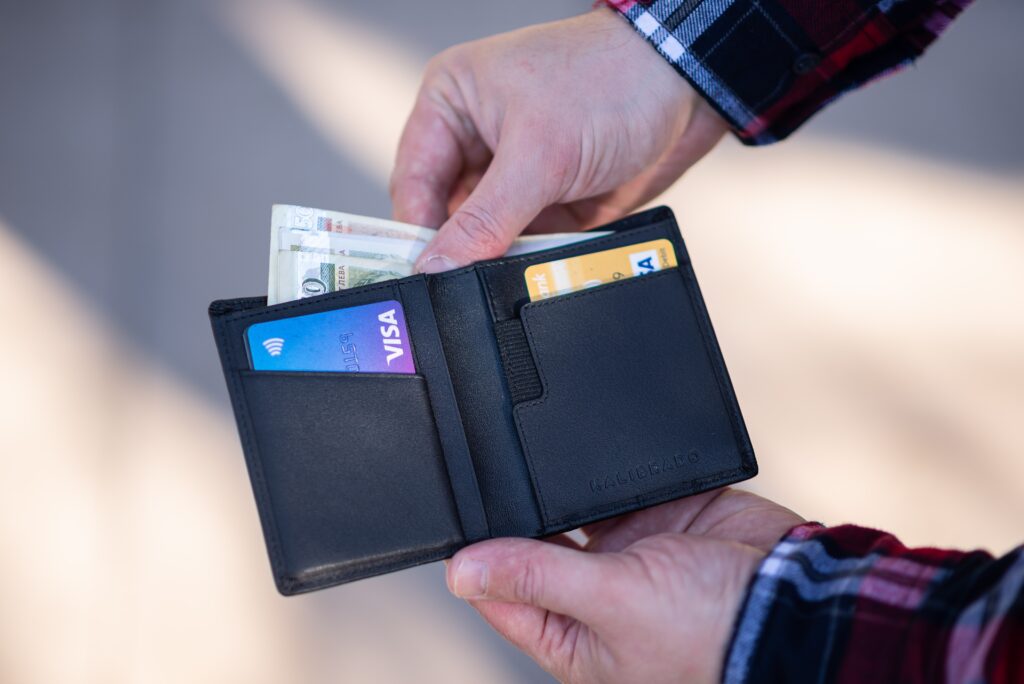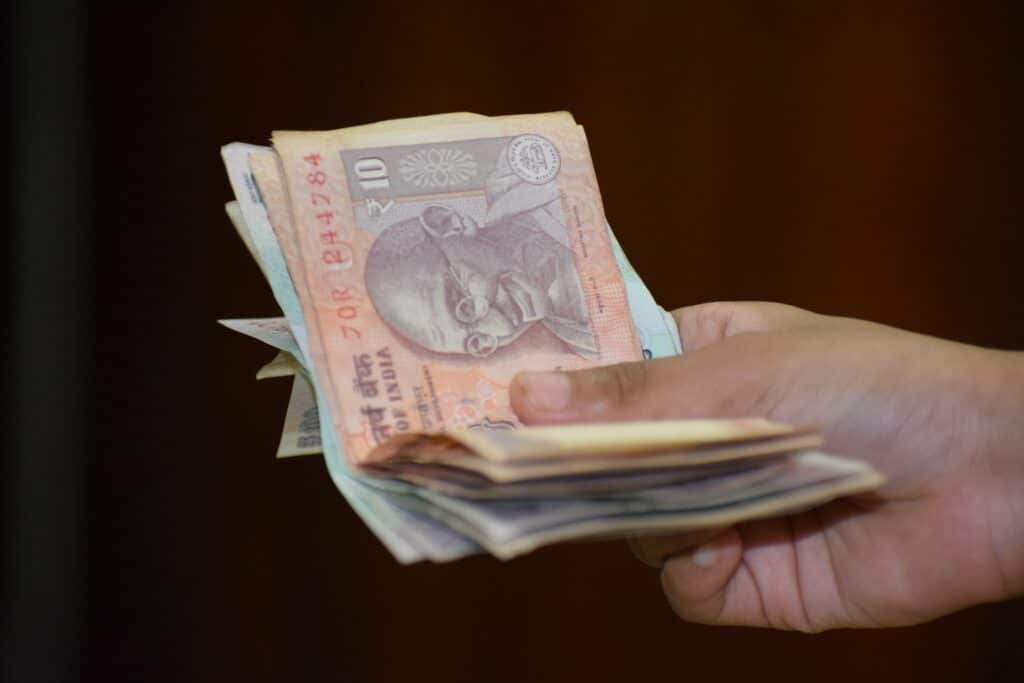Until the early 2000s, sending money usually meant visiting a bank or other financial institution in person. International money transfers could be especially cumbersome. Today, you can pay your co-worker back for lunch or transfer funds to someone on the other side of the globe right from your mobile phone.
It’s often impractical to head to the ATM and hand cash to someone, but it’s simple to send money online. In fact, mobile apps and internet banking make sending money fast, safe, and straightforward. They have revolutionized personal finance.
Many banks and money transfer services are available, each with its own setup, terms, and fee structures.
Let’s take a look at your options for sending money to someone.

3 Ways to Send Money to Someone
What’s the best option for sending money? The short answer: it depends on your needs.
Sending money domestically or internationally can be done through a traditional bank, a money transfer service, or a peer-to-peer (P2P) service.
Sending money from your bank to another person’s bank is done via ACH or wire transfers. You can initiate these transactions in person at a physical branch, over the phone with a banker, or via your online banking service.
Money transfer services are available in person, online, and through mobile apps via various companies such as Remitly. This is usually a convenient method for making an overseas payment.
P2P, or peer-to-peer services, such as PayPal and Venmo, allow direct transfers from account to account. Both the sender and recipient must have an account, which is typically but not always linked to a debit card or checking account.
International Transfers
If you need to know how to send money to loved ones abroad, look into money transfer services that specialize in this. They work within a global network to facilitate transfers.
Options include sending money to a recipient’s bank account, mobile money account, brick-and-mortar cash pickup location, or even in-person cash delivery in some countries.
How Much Does it Cost to Send Money to Someone?
Plenty of peer-to-peer transfer apps offer zero fees for certain types of domestic transfers. However, most money transfers do come with some sort of fee.
Of the common options, bank transfers are often more expensive than mobile apps.
NerdWallet conducted a March 2021 review of transfer fees by major credit unions and banks such as U.S. Bank, Chase, and Fidelity. They included both outgoing and incoming wires and domestic and international transfers.
The results? They report that the median fee for sending a domestic wire transfer, of the banks they surveyed, was a whopping $25 USD.
For domestic money transfers, service providers generally charge an upfront fee, a percentage fee, or both. Some services charge a fee to transfer money to or from a credit or debit card, but not for moving money into a linked checking or savings account.
Fees used to be higher when sending money internationally and sometimes, still are. Forbes reports that financial institutions take an average of 7% of the hundreds of billions of dollars in international remittances processed annually.
Remember the NerdWallet review? The median fee for sending an international wire transfer among their surveyed banks was even higher, at $49 USD.
Fortunately, apps like Remitly are changing that. Log into our app or visit our homepage and select your destination country to see our current low fees.
For example, as of this writing, it costs zero fees when you send $1000 USD or more from the U.S. to India. For smaller amounts, as of this writing, it costs just $3.99 to send money to India from the United States.
How Can I Transfer Money to Someone Using a Credit Card?
Want to know how to send money to someone using a credit card? Firstly, understand that sending money with a credit card, rather than a bank account or debit card, may cost you extra fees in addition to regular transfer fees.
Credit card providers treat transfers to another person as a cash advance, which is drawn from the card’s line of credit.
Expect an upfront transaction fee, either a fixed fee or percentage of the total, and often a higher interest rate on the cash advance sum as well.

How Do I Send Money to Someone’s Bank Account?
The process for sending money to another person’s bank account varies, but is typically done online or using a mobile app.
With banks, you can go to a branch in person, or sometimes set up a transfer over the phone. Online banking portals give you the option to set up an ACH or wire transfer from your account. You will need the recipient’s personal and banking account details.
With money transfer services, processes vary from company to company. First, you enroll in the service or set up an account. In some cases, your recipient may also need to set up an account with the service.
Most likely, you will need to link a checking or savings account, debit card, or credit card.
After any initial setup requirements, sending money usually involves inputting the recipient’s details. This could be a phone number, email address, or other identifying details.
Some transfer services might also have the option for the recipient to collect cash from a local branch, supermarket, or other physical location. Within the United States, these include services like Western Union. Internationally, they are also an option for sending cash, though money transfer apps like Remitly can be more affordable.
How Can I Send Money without a Bank Account?
Fees are just one consideration for those researching how to send money to someone domestically or internationally.
There are many other factors to consider, such as:
Is the service user-friendly?
Are you able to easily find and understand the fee schedule and other details of the service? Is the app easy to navigate? Can you use the service at a convenient time?
What is the time frame for transfers?
You might not need to send money urgently and will gladly pay a lower fee for a transfer that takes several business days to go through. Or, you might require your transfers to be processed as quickly as possible.
Look into the details regarding transfer times.
How much money do you need to send?
Many service providers have minimum and maximum send amounts allowed per transfer or per month.
Fees might vary with different transfer amounts, too. With international transfers, these limits can also vary by country.
Learn more about sending limits with Remitly on our help center page or by logging in to the app.
Where is the service available?
You’ll want to make sure you can send to the country or region of your choice, and furthermore, that the recipient options are convenient on that end.
What are the needs of the recipient?
Perhaps you need to send money to someone who doesn’t have a checking account. Or someone who lives in a remote area without access to a physical branch of a financial institution. Maybe you’re sending money to an elderly relative who prefers to do their banking the old-fashioned way.
These personal factors will make some transfer service providers more suitable than others.

Which Transfer Service Is Right for You?
Having researched your options for money transfer services, you should have a good idea about which ones are right for you.
A popular peer-to-peer app could be the best for sending money to your college kid. On the other hand, your bank might come out on top when you want to send your niece a substantial sum as a wedding gift.